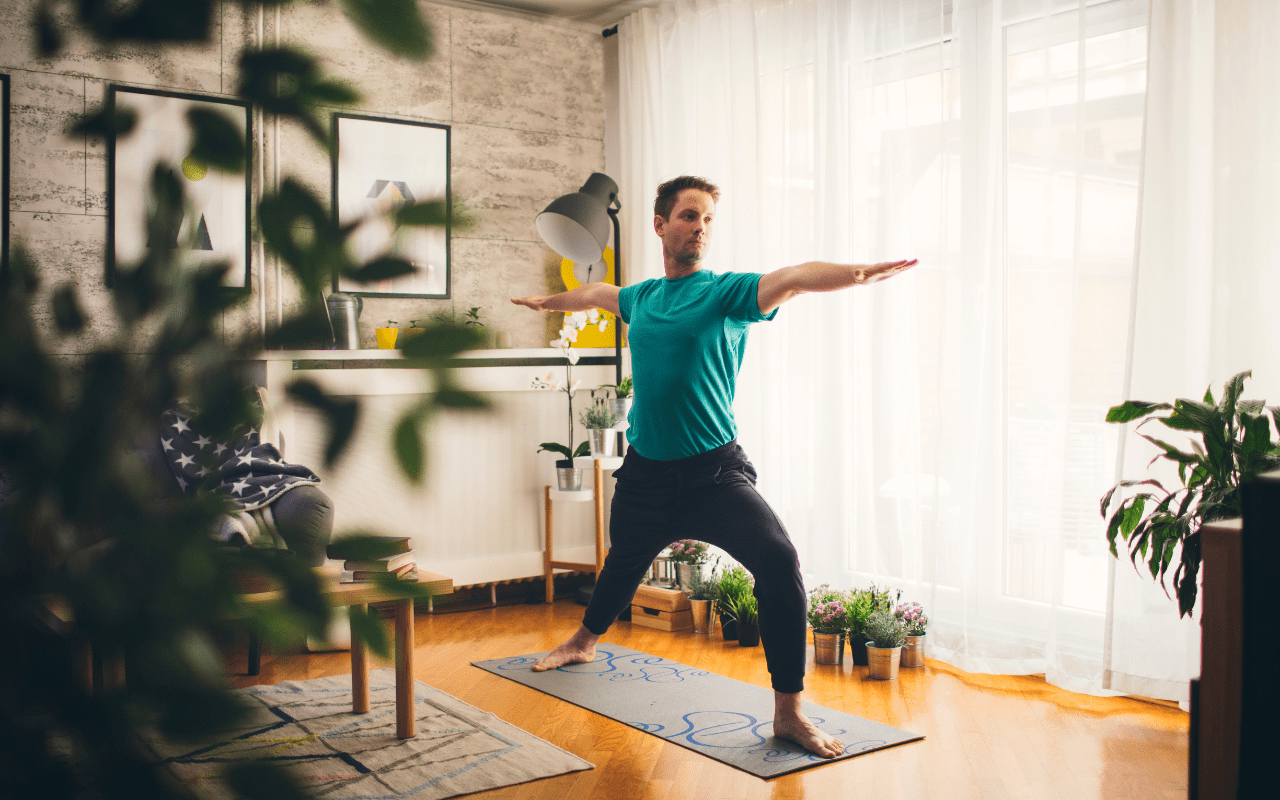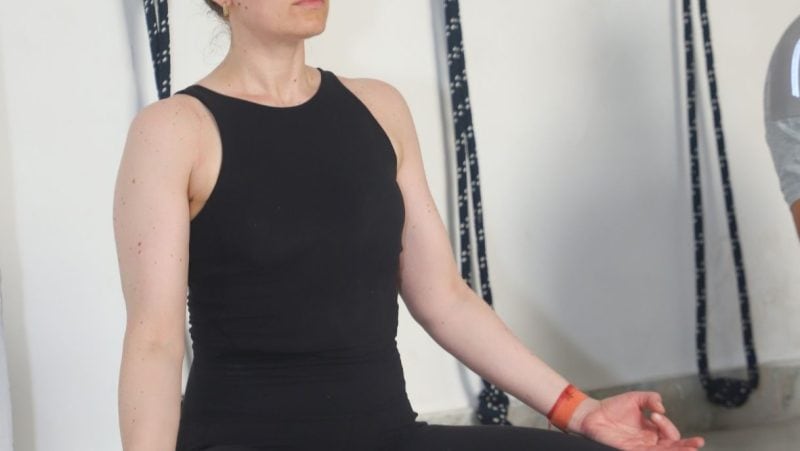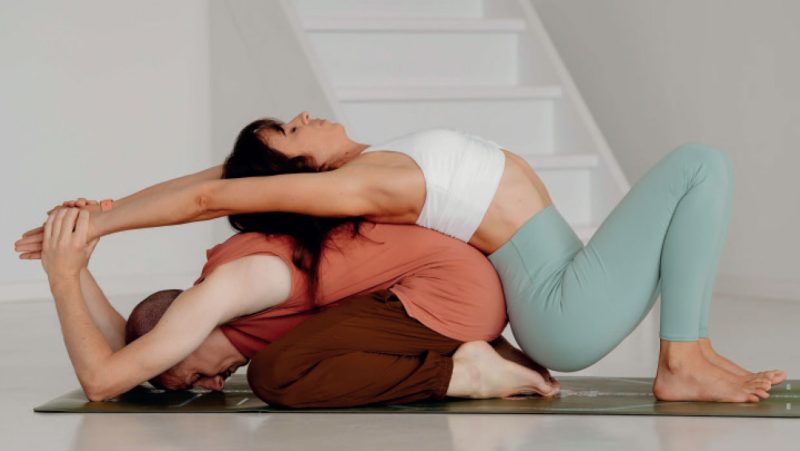
5 easy ways to start a home yoga practice
...and how to keep it going! By Juliet Lundholm
Hands up if you’ve been meaning to begin a home yoga practice, but somehow you just can't get started? Or perhaps you’ve started, then stopped, then started again but just can’t keep it going? Practicing yoga at home has many benefits – it’s free, you can practice anywhere, you can practice anytime and it teaches you to truly tune into what your own body needs. So, here are 5 easy steps to help you begin your own home yoga practice and keep it going.
1. Create a space you long to be in
You are much more likely to come to your mat if the space around it is peaceful, calm, quiet and you are not knocking into furniture, piles of clothes or kids' toys. Let the space you choose to practice in be a sacred space which signifies all the inner peace you know you’ll encounter once you enter into your practice there. Some people like to decorate the space by adding candles, incense or even a vision board or for some just keeping it clear of clutter is enough to inspire a quieting of the mind. If you are able to keep this space a permanent fixture in your home you are more likely to be reminded and therefore more likely to jump into it and keep the momentum going. If space is limited, just roll up the mat but leave it out where you can see it so that the idea stays in the subconscious and propels you back to it.
2. Find a mat you love
I don’t believe you need to spend a fortune to start your home yoga practice, the joy of yoga is exactly that the movement is completely free and all you really need is yourself. However, there are a couple of reasons for choosing a mat you love to help you maintain a sustainable home practice. Firstly, the mat represents a section of space in which our minds might experience some relief from the stress-inducing and unpredictable nature of daily life. For many, that creates a special bond between mat and student which makes you want to return time and time again so choosing one you love will only strengthen this relationship. Secondly, a well-made, padded, non-slip mat will enhance your yoga practice no end by reducing knee and wrist pressure and allowing you to focus on your movement rather than desperately trying to stop slipping in downward facing dog or wincing when you feel the hard floor under your knees. If there is one investment I recommend it is this, there is nothing more satisfying than rolling out your beloved old mat and seeing the well-trodden marks of your long-time practice.
3. Set realistic goals
You won’t be alone if you’ve enthusiastically set yourself the goal of practicing yoga for an hour every day only to feel pretty rubbish when after day two you just can’t find the time or motivation. For many the belief is that coming to the mat for less than an hour does not constitute a ‘proper’ practice and therefore doesn’t count. This is absolutely not the case. Yoga is not about the time it takes but about the moments you stop, catch your breath, and draw your thoughts towards your body. In order to succeed in maintaining a practice start by setting realistic goals; perhaps this means 5 minutes a day or practicing twice a week instead of seven. When we set these more realistic goals we are more likely to stick to them, which in turn, will boost our self-confidence and propel us to continue the routine. 5 minutes will soon turn into 10, and you will often find that once you come to your mat you’ll end up practicing for much longer than you envisaged, not because you told yourself you should, but because you enjoy it – and that is when the new habit will be formed and that is when the practice will be sustained.
4. Schedule in the time and make it non-negotiable
Once you have decided on your realistic goals look at your week and schedule in the time for yoga exactly as you would for any other appointment or event. Make it non-negotiable so that whatever excuses your mind comes up with to skip it, (and it will) you follow through on your appointment with yourself just as you would if you had made a commitment to someone else. This is the start of treating yourself with as much care and consideration as you would another person. Write it in your diary, on your calendar, let your partner know, set an alarm or find an accountability buddy who can check in with you and keep you on the straight and narrow. Ultimately remember why you want to do it, how it makes you feel, and the benefits you know it will give you. A brilliant way to keep you motivated is to write these on a post-it note and stick it somewhere you often look so that you always remember the why. When I first started practicing I had a screen saver which said ‘no one ever regretted going to yoga’ – and it was absolutely right.
5. Forgive yourself and remember what yoga really is
All this being said, it is important to forgive yourself when things don’t go to plan and you don’t practice as much as you had hoped. For all its benefits, practising at home can, of course, sometimes be more challenging than we think. Finding the time, the space, the quiet and dealing with the monkey on our shoulder can throw us off balance and stop us in our tracks. This is OK too. The key thing is that you recognise the willingness to try again and that when you do show up on your mat you remain open, present, and accepting of yourself exactly as you are in the moment. Know that any time you take a beat to tune into your body and your breath, dropping out of the swirling of the mind – this is yoga at its essence. If this doesn’t always happen on your mat, but rather at random moments throughout the day, this is just as valid! You’re still practicing yoga in its most magical way – wherever it happens to be.





